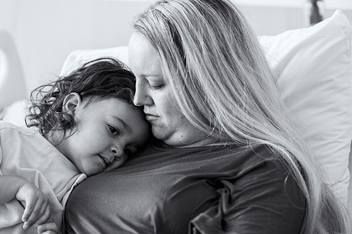Anorectal reconstructions
In some cases, a single reconstructive surgery can help restore a way for the body to pass waste; however, most complex malformations will require a series of surgeries, performed over several months, to help normalize bowel function. Depending on the severity of the condition, surgeries can be done within the first few days or weeks of a baby’s life, or can be delayed for several months if necessary.
Any child who goes through a malformation repair is given a detailed post-surgery recovery plan that helps them heal properly and increases their likelihood of regaining healthy bowel function and long-term bowel control.
Surgical Steps
Experts at Nationwide Children’s create personalized surgical plans for each child that addresses specific malformations, future growth considerations and any other health conditions. Colorectal, urologic, gynecolory and motility concerns are always taken into account. Generally, the repair process will follow this course:
- Colostomy: This procedure allows the baby to excrete waste, have normal digestion and growth, and reduces the risk of infection while they wait for the next surgery. Not all children with anorectal malformations will need an ostomy, but most will. Click here for more information about colostomies.
- Classifying the type of malformation: Doctors will use special X-rays to determine if the malformation is low or high. Click here for more information on distal colostogram. Usually, low malformation types can be repaired with one surgery, and children can be expected to recover good bowel control. Children with high types require more procedures and will typically have more challenges regaining bowel control.
- Reconstructive surgery: The goal of surgery is to create a normal connection between the rectum (the very end of the large intestine) and the anal opening, and close off any fistulas (abnormal openings) that prevent healthy bowel movements. If an anal opening is missing, then the surgeon will create a new one. Most of the reconstructive procedures at Nationwide Children’s are performed using laparoscopic, or minimally invasive, surgery. The techniques and technology used help minimize your child’s discomfort, healing time and risk for infection. Recovery from surgery usually requires a hospital stay of two to four days.
- Post-surgical recovery with colostomy: After the reconstructive surgery, typically the colostomy will stay in place for eight weeks so the rectum and anal opening can heal completely before it comes in contact with any waste. During this healing period, caregivers will perform anal dilations, which slowly stretch the anus to the correct size for the child’s age so that stool can be comfortably passed. Clinic staff will help train caregivers on how to use anal dilators, which will usually be used over a period of six months, even after the colostomy is closed.
- After colostomy closure: Several days after the colostomy is closed, your baby will begin passing stools through their anus. At first, stools are usually loose and frequent. Diaper rash and skin irritation can occur, and clinic staff can help advise you on safe topical treatments to help protect your child’s skin. Within a few weeks though, stools will become firmer and less frequent. Often at this point, treatment for constipation is required. Anal dilatations are continued for several more months.
- Avoiding complications: The single biggest post-surgical and long-term complication is constipation. By following the right diet and medications, your baby can avoid constipation and begin to develop regular bowel habits that will ultimately make toilet training much more successful.
While surgeries can help repair the parts of the body needed to pass solid waste, it cannot always restore the nerves and sphincter muscles the body relies on to tell a child when it’s time to go to the bathroom. In cases where there are missing or damaged nerves, or insufficient sphincter muscles, severe constipation or difficulties with potty training, a bowel management program may be needed.



